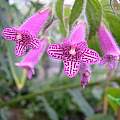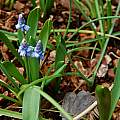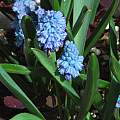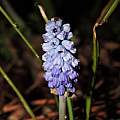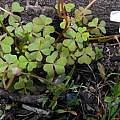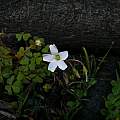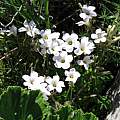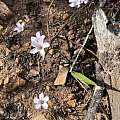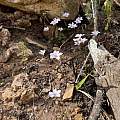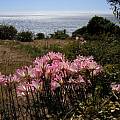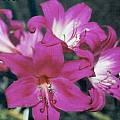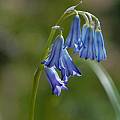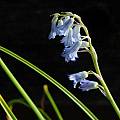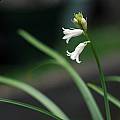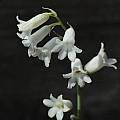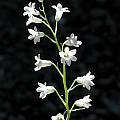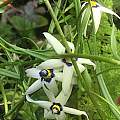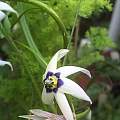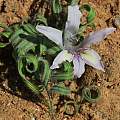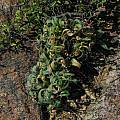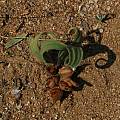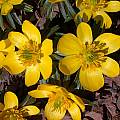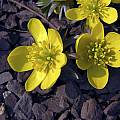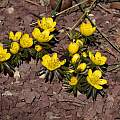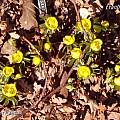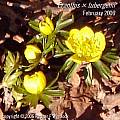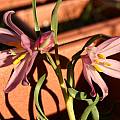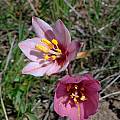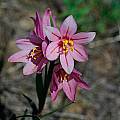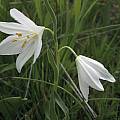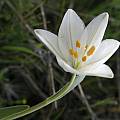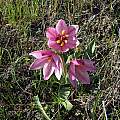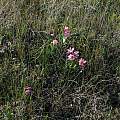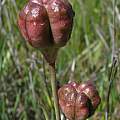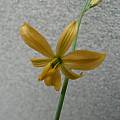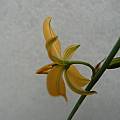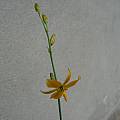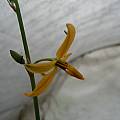This page is a random selection of wiki entries which is updated daily.You can subscribe to it as an RSS feed  The RSS feed contains 'media' data and can be used as a 'photo feed' by programs such as screen savers, slide shows and picture frames.Click to add Bulb Day to your MyYahoo page
The RSS feed contains 'media' data and can be used as a 'photo feed' by programs such as screen savers, slide shows and picture frames.Click to add Bulb Day to your MyYahoo page 
From Seemannia on Wednesday 16th of April 2025 08:20:17 PM PDT
Seemannia gymnostoma (Griseb.) Toursark. is native to southern Peru, Bolivia, and NW. Argentina. This Bolivian native is a tall (more than 1 m) summer growing rhizomatous winter dormant plant. It needs time to grow, but then flowers for a long time and has a relatively short dormancy. Photos taken by Johannes-Ulrich Urban of a cultivated plant grown under glass.
From Pseudomuscari on Tuesday 15th of April 2025 07:53:13 PM PDT
Pseudomuscari azureum (Fenzl) Garbari & Greuter syn. Muscari azureum Fenzl grows in alpine meadows in Turkey. It is 4 to 15 cm. with dense racemes of bright bell shaped blue flowers. First two photos by Mary Sue Ittner. Third photo shows a close-up of the inflorescence by Travis Owen.
From South African Oxalis Three on Monday 14th of April 2025 05:56:14 PM PDT
Oxalis dentata Jacq. is described in the field guide for Table Mountain National Park as a synonym of Oxalis livida and having a well developed, often branched hairless stem, trifoliate heart-shaped leaves that are purple below and 2-5 pale mauve flowers borne on an umbel. The illustration shows a mauve flower, but the leaves are very different from Oxalis livida leaves. In 2024 many sources list this species as being a synonym for Oxalis livida var altior. In 1950 Salter commented that there is a marked difference in the leaves and the root system of that species. Photos from iNaturalist of Oxalis dentata were taken by Tony Rebelo and vfbailey and shared under CC BY-SA and CC BY-NC licenses. These photos do not look at all like the photos of Oxalis livida var. altior on iNaturalist. So this is a puzzle. Some of the plants distributed under this name are obviously not this species. Christiaan van Schalkwyk received some that appear to be Oxalis uliginosa.
From Favorite Pink Flowered Bulbs on Sunday 13th of April 2025 05:21:53 PM PDT
Amaryllis belladonna -- pink cultivars, Kevin Preuss, St. Pete, FL; Rogan Roth, KwaZulu-Natal, South Africa; especially the ones that have other related genera in their ancestry, Lee Poulsen, Southern California, USDA Zone 9-10; Ann, So. California, San Gabriel Valley.
From Brimeura on Saturday 12th of April 2025 05:02:42 PM PDT
Brimeura amethystina (L.) Chourd syn. Hyacinthus amethystinus L. from rocky and grassy places in the Pyrenees to northeast Spain, Slovenia, and Croatia prefers sun. Flowers are blue and there is also a white form. The narrow grasslike linear leaves appear late fall to winter and the flowers spring to early summer. This species is described as good for naturalizing, but the only ones I planted out in coastal Northern California disappeared before they ever bloomed. Plants grown from seed and kept in pots dry in summer took many years before they finally bloomed. Photos from Mary Sue Ittner.
The white form is sometimes described as Brimeura amethystina ‘Alba’. These plants were grown from seed and grown in a pot. They were photographed in 2007 by Mary Sue Ittner in their first bloom from seed planted in 2002.
From Walleria on Friday 11th of April 2025 05:11:03 PM PDT
Walleria gracilis (Salisb.) S.Carter is the winter growing species of this small African genus. It is found in Namibia and in South Africa in the Olifants river valley and near the foot of the Gifberg in two currently known populations. In its natural habitat it is found in sandy soils, but it does not require such soils to grow in cultivation so long as they are well drained. It is easy to grow but not necessarily fast to germinate from the relatively large seeds, which should be sown under cool conditions. Plants will begin to flower in their second year from seed. The plant is much like a miniature gloriosa vine, growing to 30 cm, with the addition of small spines on the undersides of the leaf midribs. Blue centered white flowers are readily produced in early winter and probably are buzz pollinated judging from their structure, which resembles that of some Solanaceae flowers in that the stamens are fused to form a cap that barely subtends the pistil. This species can be self pollinated by hand. Large tubers are produced and more than one may eventually result after a few years of growth. They can be separated to grow new plants. It is also not uncommon for this species to skip a year of growth but careful inspection will usually reveal that the tuber is still there. I grow this species under lights and this can present some problems as it is a vining species but it is easy to keep it from running into the light tubes by pressing the vines down and allowing them to clamber over and around neighboring plants. In a greenhouse or in a garden with suitable climate it can be allowed to crawl up a small trellis. Photos and information supplied by Ernie DeMarie.
From Babiana Five on Thursday 10th of April 2025 05:31:24 PM PDT
Babiana torta G.J.Lewis grows in crevices in granite outcrops or granitic gravel in Namaqualand. This early blooming (May to June) fragrant species has distinctive lanceolate undulate leaves twisted above the middle with pale blue to mauve or white flowers borne close to ground level. The lower lateral tepals have a pale yellow to white median blotch edged in dark blue. Height: 7-15 cm. The first photo from iNaturalist was taken by Kevin Murray in July in Namaqualand and shared under a CC BY-NC license. The next two photos were taken in September 2007 in Namaqualand by Mary Sue Ittner of the distinctive leaves and of seed pods.
From Eranthis on Wednesday 9th of April 2025 05:07:42 PM PDT
Eranthis x tubergenii is the name given for hybrids of Eranthis hyemalis and Eranthis cilicica. These two species hybridize to produce vigorous sterile plants with large flowers. The first four photos are from John Lonsdale and the last two are from Rodger Whitlock.
From North American Fritillarias Two on Tuesday 8th of April 2025 06:16:46 PM PDT
Fritillaria pluriflora known as the Adobe Lily grows in dense clay and serpentine in some inland valleys of the Northern Coast ranges of California. It is also found in a few spots in north central Sierra Nevada foothills. It is considered rare because of habitat degradation, cattle grazing, and horticultural collecting. It has bowl-shaped pink flowers. Photo 1 from Bob Werra is of a plant that he grows.
Photos below are from Bear Valley where these plants can be seen blooming in mass, usually in March. The winter of 2007 was wetter than the last few and as a result, the floral display was awesome in March 2008! Both the typical pink form and the more unusual white form are shown. Photos 1-4 were taken by Mary Gerritsen. The third photo gives you an idea of the plurality of the bloom. Photos 4-6 show a white form. Photos 5-6 were taken by Bob Werra.
The photos below were taken by Nhu Nguyen of a population on serpentine soil in Lake Co., CA.
From Echeandia on Monday 7th of April 2025 06:42:56 PM PDT
Echeandia formosa occurs from southeast Mexico to central America. The plant photographed below by Alessandro Marinello was collected in Guatemala at Agua Volcano at 2500 meters.

